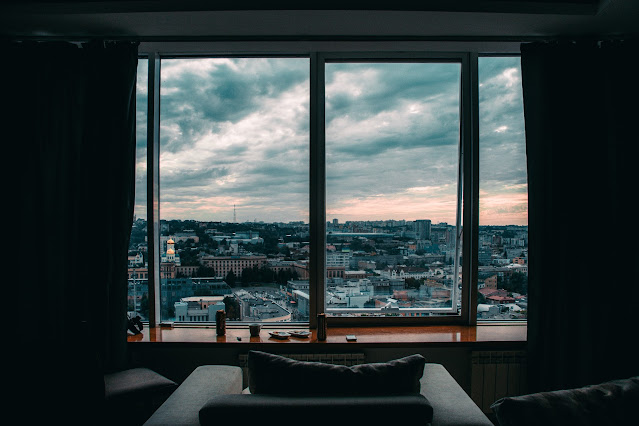Introduction-
Imagine waking up to the sound of shattering glass or receiving a notification that your business's windows have been broken. With crime rates on the rise, it's more important than ever to protect your property from potential harm. One effective solution is the installation of security film on your windows. But what is security film, and how can it benefit you and your property? In this ultimate guide, we will explore the ins and outs of security film, from its protective features to its privacy-enhancing capabilities.
1. What is Security Film?
Security film, also known as safety film or window security film, is a thin, multi-layered polyester material that is applied to windows and glass doors. Its primary purpose is to provide an added layer of protection against break-ins, accidents, and natural disasters. The film's adhesive properties help hold the glass together in the event of an impact, reducing the risk of injury from shattered glass and deterring potential intruders.
2. Benefits of Security Film-
a. Protection from Break-ins and Vandalism:
Window security film can significantly hinder a would-be intruder's attempts to break into your home or business. The film's strength makes it difficult to shatter the glass, and even if the glass is broken, the film holds the pieces together, making it harder for an intruder to gain entry. This added layer of protection can buy you precious time to call for help or escape to safety.
b. Safety from Accidents and Natural Disasters:
Accidents and natural disasters can cause significant damage to your property and pose a threat to the safety of its occupants. Security film can help minimize the risk of injury from flying glass shards during events such as hurricanes, tornadoes, or even an accidental impact with a baseball. By holding the glass together, the film prevents dangerous shards from becoming airborne and causing harm.
c. Privacy and Glare Reduction:
In addition to its protective features, security film can also provide privacy and reduce glare. Some films are tinted or reflective, which can reduce visibility from the outside while still allowing you to see out. This can be particularly beneficial for businesses that want to protect sensitive information or maintain a professional appearance. Glare reduction can also improve comfort and productivity by reducing eye strain and screen glare.
3. Types of Security Film-
a. Clear Security Film:
Clear security film is the most basic type of window security film. It is transparent and does not alter the appearance of the glass. Its primary function is to provide protection against break-ins and accidents without affecting the aesthetics of the property.
b. Privacy Film:
Privacy film is designed to obstruct the view from the outside while still allowing light to enter. This type of film is often used in commercial settings, where privacy is essential for protecting sensitive information or maintaining a professional appearance. Privacy films come in various shades and levels of opacity, from frosted to mirrored finishes.
c. Solar Security Film:
Solar security film combines the protective features of clear security film with the energy-saving benefits of solar film. This type of film can block harmful UV rays, reduce solar heat gain, and lower energy costs while still providing protection against break-ins and accidents.
4. How to Choose the Right Security Film for Your Needs-
When selecting a security film, consider factors such as the level of protection required, desired privacy, and energy efficiency. For maximum protection, look for a film with high tensile strength and thickness. If privacy or glare reduction is a priority, consider tinted or reflective films. For energy savings, opt for a solar security film. Consulting with a professional installer can help you determine the best film for your specific needs and goals.
5. Installation Process and Maintenance-
Security film installation should be performed by a trained professional to ensure proper adhesion and performance. The process typically involves cleaning the glass, cutting the film to size, applying a mounting solution, and using a squeegee to remove air bubbles and excess solution. Properly installed security film should be virtually invisible and maintenance-free, requiring only occasional cleaning with a soft cloth and non-abrasive cleaner.
6. Cost Considerations-
The cost of security film varies depending on factors such as the type and quality of the film, the size of the windows, and the complexity of the installation. While it may be an investment upfront, the potential savings on energy costs and potential property damage can make it a wise choice in the long run.
7. Frequently Asked Questions-
- Can security film be applied to existing windows?
Yes, security film can be applied to existing windows without the need for costly replacements.
- Is security film noticeable?
When properly installed, security film should be virtually invisible, with only a slight difference in appearance for tinted or reflective films.
- How long does the security film last?
The lifespan of a security film depends on factors such as the quality of the film, the installation, and the local climate. High-quality films can last up to 15 years or more with proper care.
8. Conclusion-
Security film offers a practical and cost-effective solution for protecting your property and ensuring the safety and privacy of its occupants. By understanding the different types of security film and their benefits, you can make an informed decision about the best film for your needs. Investing in security film can provide peace of mind and long-term value for your home or business.
